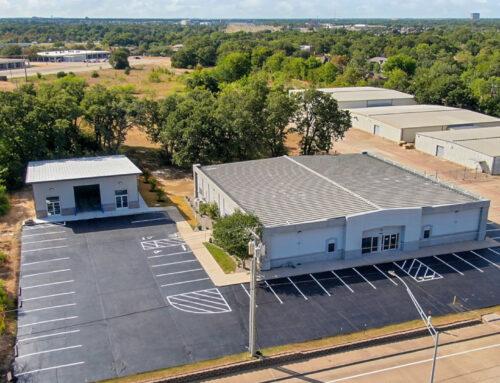Retail Robots
For the residents of modern hubs like New York City or San Francisco, the futuristic age of Big Brother began years ago. Innovations in art, technology, culture, and business live and die in these cities without ever gaining national reach. Metropolitan areas work like incubators for innovation, while rural areas are tougher to infiltrate. If an invention can’t survive in Nowhere, Kansas, then it probably won’t become fully integrated into American life.
Perhaps you’re eager to adopt all manner of screens and robots into your home, or maybe even dreading their arrival in your town—regardless, they’re on their way. This week, we’ll be taking a quick look at a few in-store technologies that might have legs in Middle America and beyond—whether we like it or not.
Starting small, and delicious.
Sushi conveyor belts have officially descended upon the suburbs. Their killer combination of simplistic machinery and complex software create a dopamine-inducing experience that I can only liken to Willy Wonka’s Chocolate Factory.
Here’s how they work: Conveyor belts are woven strategically through the restaurant space so that all patrons are within reaching distance of the single-portion sushi servings cheerfully skating on by. Usually, a photo-heavy menu is also available to assist with allergy concerns or culinary curiosities. Once the hungry customer spies a plate of something good, they’ll simply grab it off the belt and chow down. The tables have built-in disposal slots so the plates don’t stack up. Using a fairly rudimentary screen, the slot tallies up dollars and cents based on plates consumed. With the assistance of this conveyor belt technology, sushi restaurants sell more product in less time and with decreased labor costs, since the waitstaff are only responsible for answering questions and filling drinks.
Sustainable shopping.
By reinventing the price tag, Kroger is increasing its appeal to both consumers and the environment. Using a new technology dubbed Kroger Edge, the grocery chain has installed long, thin screens beneath each of their product shelves.
Unlike paper tags, these screens can flick between images, which means everything from allergy warnings and nutritional facts to one-time sale prices are visible without the shopper ever handling the physical items. Since the screens’ blue light is clearly visible, Kroger has also been able to dim their overhead lighting to conserve energy.
In the future, Kroger hopes to utilize this technology to alert its customers when they’re near an item on their shopping lists. Instead of relying on their own geographic talents to find the items they need, shoppers can simply watch the screens alert them to a particular object as they walk down the aisles.
Choose your words wisely.
Big box retailer Walmart is currently pursuing a patent and licensing to install audio surveillance devices nationwide. While the company emphasizes their mundane interest in hearing the rustling of bags and the beep of the scanner to gather standard data on the shopping experience in their stores, they’re also not backing down from the technology’s capability of listening to conversations between their customers and their employees—or even between the customers themselves.
Rather than shelling out big money for market research, Walmart seems to be building its own infrastructure for collecting massive quantities of data about the people that walk in its doors. Of course, this technology is still in the works and may run into some obstacles in states with two-party consent laws. But, with robotic inventory counters and futuristic pick-up towers (see below), this store won’t soon be falling behind in the tech department.
Rise of the Machines.
Now that technological expertise has been passed down from NASA to the common man, intelligent metal devices seem to be slowly and surely weaseling their way into our rural mundanity. There’s no telling how these advancements will revolutionize the world of customer service, nor can we accurately predict how many malfunctions we’ll encounter before in-store technology enters the fabric of our daily lives. New century, new problems, right?
Author:
McKenzie Allen
Business Development Manager
800-677-2260 Ext.168
Email
Contact
Contact us below for more information or cost estimation for an upcoming project.
[Form id=”9″]


